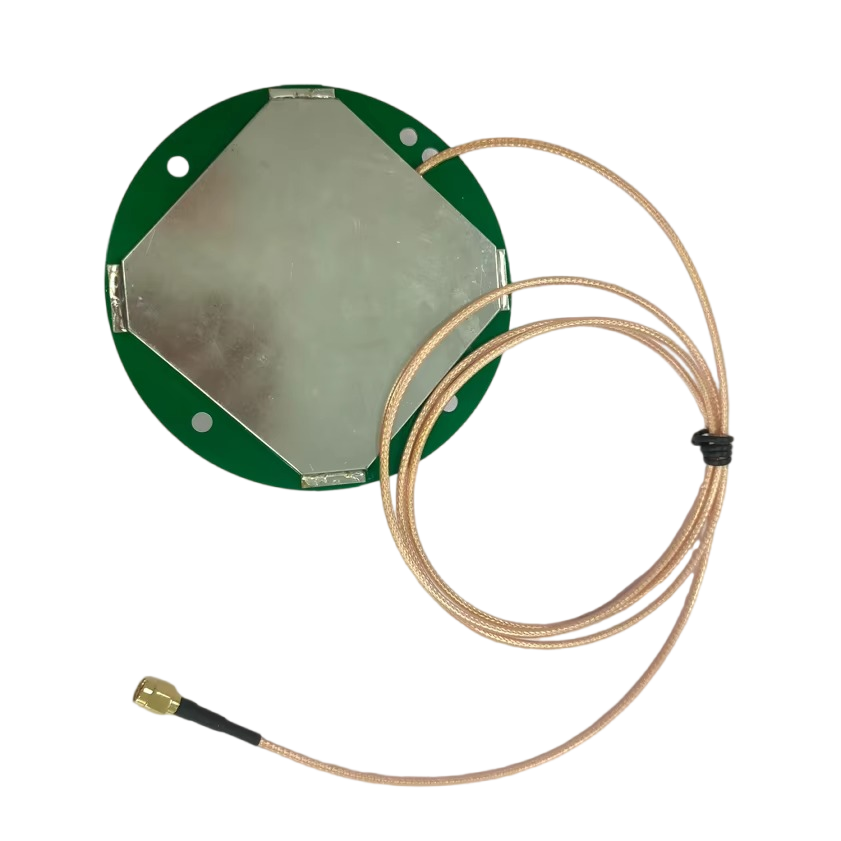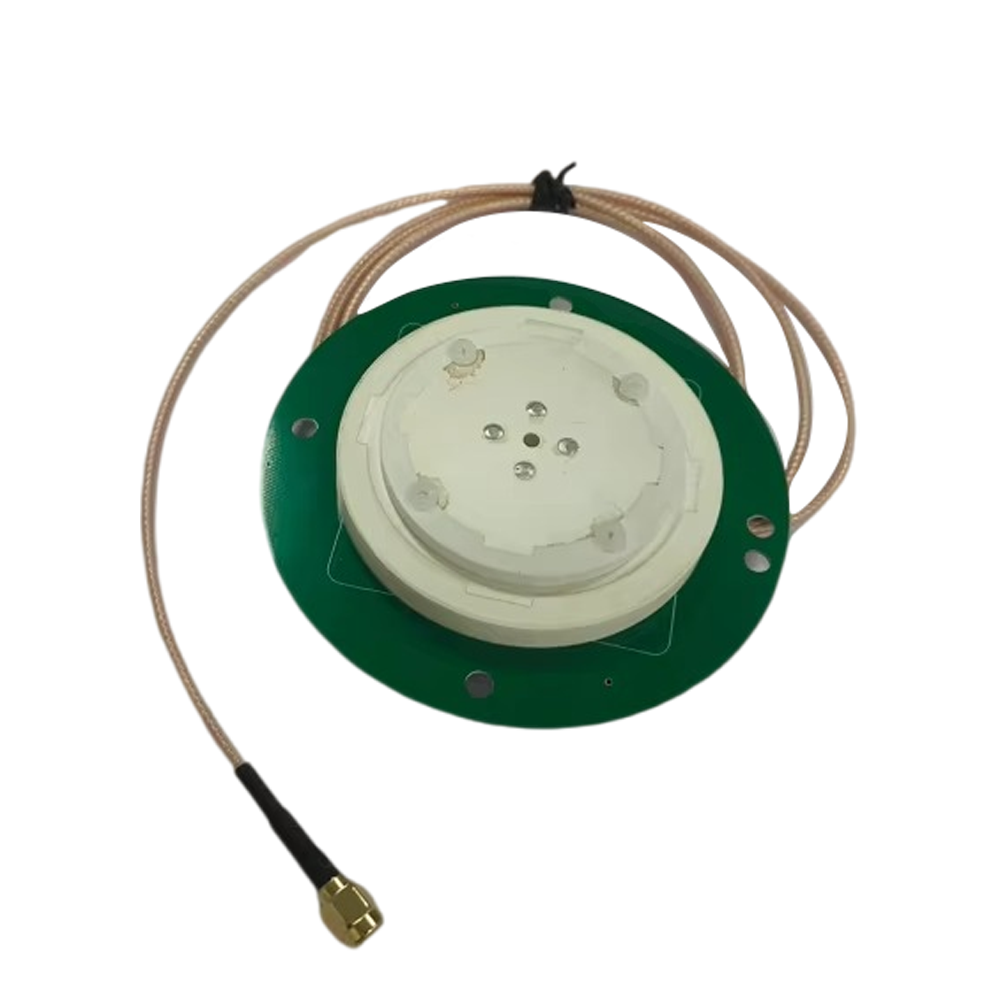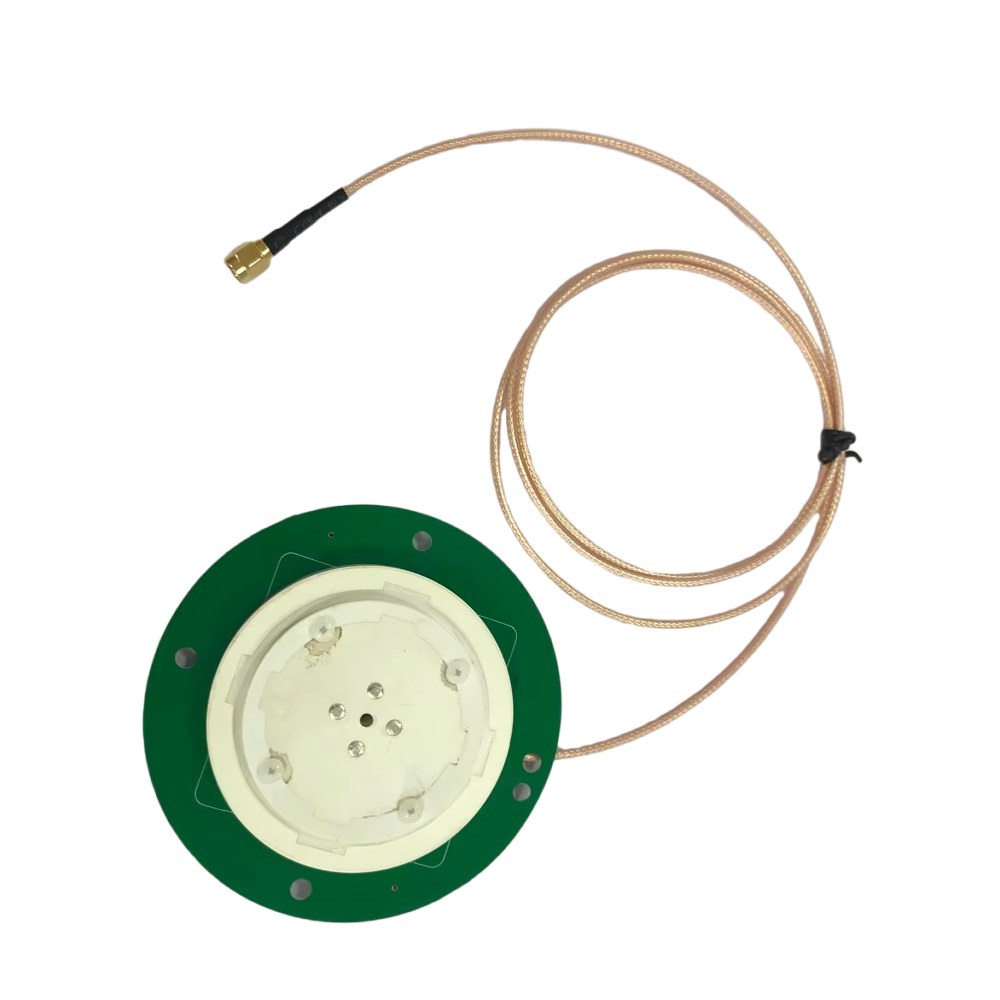The automotive multi-band RTK car antenna solution is already transforming a range of automotive applications, from autonomous driving to fleet management. As technology advances and challenges are addressed, its applications will expand further, while new trends will shape its evolution. This section explores the current key applications and future trends of this critical technology.
5.1 Key Current Applications
5.1.1 Autonomous Driving (AD)
Autonomous driving is the most high-profile application of multi-band RTK antennas, as centimeter-level positioning is essential for all levels of autonomy (L3 to L5). For example:
L3 Autonomy (Conditional Automation): Vehicles with L3 autonomy can handle most driving tasks (e.g., highway driving) but require the driver to take over in certain situations. Multi-band RTK antennas provide the precise positioning needed to maintain lane position, navigate highway exits, and avoid obstacles. For instance, Tesla’s Autopilot (which is approaching L3 capability) uses multi-band GNSS (including GPS L1/L2 and Galileo E1/E5a) to enhance positioning accuracy.
L4/L5 Autonomy (High/Full Automation): L4 and L5 vehicles require no human intervention, even in complex urban environments. Multi-band RTK antennas are critical here, as they enable the vehicle to navigate narrow streets, avoid pedestrians and cyclists, and park autonomously. For example, Waymo’s self-driving taxis use multi-band RTK antennas (paired with lidar and radar) to achieve centimeter-level positioning in cities like Phoenix and San Francisco.
Without multi-band RTK antennas, autonomous vehicles would rely solely on lidar and radar, which are more expensive and have shorter ranges. The antenna’s ability to provide long-range, precise positioning reduces the reliance on other sensors, lowering costs and improving reliability.
5.1.2 Advanced Driver Assistance Systems (ADAS)
While ADAS systems (e.g., L1/L2 autonomy) do not require centimeter-level accuracy, multi-band RTK antennas still enhance their performance. Key ADAS applications include:
Lane-Keeping Assist (LKA): LKA uses positioning data to ensure the vehicle stays within its lane. Multi-band RTK antennas provide the precision needed to detect small lane departures (e.g., 10–20 cm) and correct them, even when lane markers are faded or missing.
Adaptive Cruise Control with Stop-and-Go (ACC-SG): ACC-SG maintains a safe distance from the vehicle ahead. Multi-band RTK antennas enable the system to predict the leading vehicle’s position more accurately, reducing braking and acceleration events and improving passenger comfort.
Automatic Emergency Braking (AEB): AEB uses positioning data to detect potential collisions with other vehicles or pedestrians. Multi-band RTK antennas provide faster, more accurate position updates, allowing the system to trigger braking earlier and avoid accidents.
According to a study by the Insurance Institute for Highway Safety (IIHS), ADAS systems enhanced with multi-band RTK reduce rear-end collisions by 30–40% compared to systems using single-band GNSS.
5.1.3 Vehicle-to-Everything (V2X) Communication
V2X communication enables vehicles to exchange data with other vehicles (V2V), infrastructure (V2I), pedestrians (V2P), and the cloud (V2C). Precise positioning is essential for V2X, as it ensures that vehicles can accurately report their location and interpret the location of other objects. Multi-band RTK antennas support key V2X applications:
Cooperative Adaptive Cruise Control (CACC): CACC allows a platoon of vehicles to travel closely together (with gaps of 1–2 seconds) by sharing position and speed data. Multi-band RTK antennas ensure that each vehicle in the platoon knows the exact position of the vehicle ahead, reducing fuel consumption and improving traffic flow.
Intersection Collision Warning (ICW): ICW uses V2I communication to alert drivers of potential collisions at intersections. The antenna’s precise positioning ensures that the system can accurately determine the vehicle’s distance from the intersection and the speed of oncoming vehicles, triggering warnings in time to avoid accidents.
Pedestrian Safety: V2P communication alerts drivers of pedestrians in the vicinity. Multi-band RTK antennas (paired with pedestrian smartphones or wearables that use GNSS) provide the precise position of pedestrians, even in crowded urban areas.
5.1.4 Fleet Management and Logistics
Fleet operators rely on multi-band RTK antennas to optimize operations, improve safety, and reduce costs. Key applications include:
Precise Tracking: Multi-band RTK antennas enable real-time tracking of fleet vehicles with centimeter-level accuracy. This allows operatorsto monitor the exact location of each vehicle, ensuring compliance with delivery schedules and identifying any unauthorized detours. For example, a logistics company delivering time-sensitive medical supplies can use the antenna’s data to track the vehicle’s progress in real time and adjust routes if delays occur, ensuring the supplies arrive on time.
Route Optimization: By combining precise positioning data with traffic information, fleet management systems can optimize routes to reduce fuel consumption (or EV battery usage) and travel time. For instance, if the antenna detects that a vehicle is approaching a traffic jam, the system can reroute it to a less congested road, saving time and reducing operational costs.
Driver Safety Monitoring: Multi-band RTK antennas can be paired with telematics systems to monitor driver behavior, such as harsh braking, speeding, or sudden lane changes. The precise positioning data allows the system to detect these behaviors accurately, enabling fleet operators to provide targeted training to improve driver safety and reduce the risk of accidents.
5.2 Future Trends
5.2.1 Integration with 6G and Advanced Communication Technologies
As 6G networks begin to roll out in the 2030s, multi-band RTK antennas will integrate with this technology to further enhance positioning accuracy and reliability. 6G will offer ultra-low latency (less than 1 ms) and high data rates, which will enable real-time transmission of large volumes of RTK correction data. This will be particularly beneficial for autonomous driving, as it will allow vehicles to receive correction data faster, reducing the time between position updates and improving the vehicle’s ability to react to dynamic road conditions.
Additionally, 6G will support terrestrial-satellite integration, which will extend the coverage of RTK networks to remote areas (e.g., deserts, oceans) where cellular or DSRC coverage is currently unavailable. This will enable multi-band RTK antennas to be used in off-road vehicles, shipping vessels, and aerial drones, expanding their applications beyond traditional automotive use cases.
5.2.2 Miniaturization and Cost Reduction
One of the key trends in the development of multi-band RTK antennas is miniaturization. As semiconductor technology advances, manufacturers will be able to reduce the size of the antenna’s components (e.g., LNAs, filters, radiating elements) while maintaining or improving performance. This will allow the antenna to be integrated into smaller vehicle designs (e.g., micro-EVs, urban mobility vehicles) and even into other devices (e.g., smartphones, wearables) for pedestrian positioning.
Along with miniaturization, cost reduction will be a major focus. As production volumes increase and component costs decrease, the price of multi-band RTK antennas is expected to drop by 30–50% over the next decade. This will make the technology more accessible to mid-range and entry-level vehicles, accelerating its adoption in the mass market. For example, by 2030, multi-band RTK antennas could become a standard feature in most new vehicles, similar to how GPS antennas are standard today.
5.2.3 Sensor Fusion with AI and Machine Learning
To address the vulnerabilities of GNSS-based systems (e.g., jamming, spoofing), multi-band RTK antennas will increasingly be integrated with other sensors (e.g., lidar, radar, IMUs) through sensor fusion technologies. Sensor fusion combines data from multiple sensors to provide a more accurate and reliable position estimate than any single sensor alone. For example, if a multi-band RTK antenna is jammed, the vehicle can rely on lidar and radar data to maintain positioning until the jam is resolved.
Artificial intelligence (AI) and machine learning (ML) will play a key role in sensor fusion. AI/ML algorithms will be used to analyze data from the antenna and other sensors in real time, identifying patterns and anomalies that indicate jamming or spoofing. For example, an ML algorithm could detect a sudden, unexplained change in the antenna’s position data (a sign of spoofing) and switch to lidar/radar data automatically. This will improve the robustness and security of multi-band RTK systems, making them more suitable for safety-critical applications like autonomous driving.
5.2.4 Expansion into Smart City and Smart Mobility Ecosystems
Multi-band RTK antennas will become a core component of smart city and smart mobility ecosystems. In smart cities, the antenna’s precise positioning data will be used to optimize traffic flow, manage parking spaces, and monitor public transportation. For example, a smart city could use data from multi-band RTK antennas in vehicles and infrastructure to adjust traffic light timings based on real-time traffic conditions, reducing congestion and improving air quality.
In smart mobility ecosystems, multi-band RTK antennas will enable seamless integration between different modes of transportation (e.g., cars, buses, trains, bicycles). For example, a commuter could use a smartphone equipped with a multi-band RTK antenna to navigate from their home to a train station, then from the train station to their workplace using a shared electric vehicle—all with centimeter-level accuracy. This will improve the efficiency and convenience of multi-modal transportation, encouraging more people to use sustainable mobility options.
Conclusion
The automotive multi-band RTK car antenna solution represents a transformative technology in the automotive industry, enabling centimeter-level positioning accuracy that is essential for the development of autonomous driving, advanced ADAS, V2X communication, and smart fleet management. Throughout this analysis, we have explored the solution’s overview, design and construction, working principles, advantages and challenges, and current applications and future trends—highlighting its critical role in shaping the future of mobility.
From an overview perspective, the multi-band RTK antenna addresses the limitations of single-band GNSS systems by leveraging multiple frequency bands and RTK correction data to mitigate errors from ionospheric delay, multipath interference, and satellite clock/orbital inaccuracies. Its design and construction are engineered to meet the stringent requirements of automotive environments, with components like microstrip patch radiating elements, low-noise amplifiers, and robust housings ensuring performance, durability, and integration with vehicle systems.
The working principles of the antenna—from GNSS signal reception and multi-band processing to RTK correction data transmission and position calculation—demonstrate how it achieves centimeter-level accuracy through carrier-phase measurements and integer ambiguity resolution. Its advantages, including unmatched accuracy, enhanced reliability in challenging environments, compatibility with evolving GNSS ecosystems, and seamless integration with vehicle systems, make it indispensable for next-generation automotive technologies. However, challenges like high cost, vulnerability to jamming/spoofing, power consumption, and regulatory issues must be addressed to accelerate its adoption.
Looking at current applications, the antenna is already transforming autonomous driving, ADAS, V2X communication, and fleet management—improving safety, efficiency, and convenience for drivers, fleet operators, and pedestrians. Future trends, such as integration with 6G, miniaturization and cost reduction, sensor fusion with AI/ML, and expansion into smart city ecosystems, will further expand its applications and solidify its position as a key enabler of smart mobility.
In conclusion, the automotive multi-band RTK car antenna solution is not just a technological innovation—it is a catalyst for the transition to a safer, more efficient, and more connected transportation system. As the automotive industry continues to evolve, the multi-band RTK antenna will play an increasingly important role in realizing the vision of autonomous driving, smart cities, and sustainable mobility. With ongoing advancements in technology and a focus on addressing key challenges, the future of multi-band RTK antennas is bright, and their impact on the automotive industry and society as a whole will be profound.




































































 Language
Language
 En
En Cn
Cn Korean
Korean

 Home >
Home > 







 18665803017 (Macro)
18665803017 (Macro)













